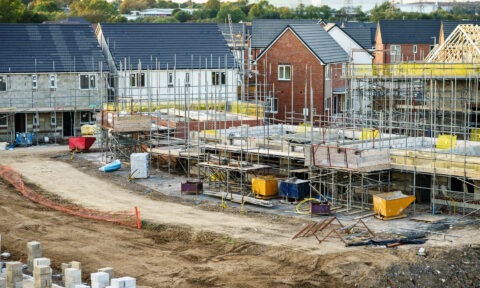Seismic Design of Foundation Structures
- Design of structures in seismic zones. Introduction to earthquake engineering. Fundamental structural dynamics and seismic analysis. Role of numerical modeling in seismic design. Geotechnical aspects of earthquake engineering. Reliability aspects of seismic resistance design.
Overview
The Seismic Design Training course aims to educate engineers and scientists on the implications of seismic actions for various structures. It covers topics such as earthquake-induced structural damage, foundation design, and geotechnical aspects. The course emphasizes best practices and code compliance, focusing on parameters required for design and interpretation of analysis. It includes lectures on numerical modeling, soil-structure interaction, and reliability-based design philosophy for earthquake analysis. Engineers and scientists involved in onshore and offshore structure design will benefit from attending.
Who should attend
Engineers, Scientists
Course Content
Day 1
9:00—10:30 – Lecture 1: Introduction to Earthquake Engineering – By Feng Fu
Different types of earthquake hazards structures, ground failure induced damages, predominantly structure related damages. First fundamental concepts of earthquake engineering are introduced i.e. the way earthquakes are generated and how forces are experi-enced by the structure i.e. seismic wave propagation. Although this is the subject of an entire different discipline, the description is kept brief and is used to provide the necessary link between the earthquake cause and the effects and how to consider this in earthquake resistant design
10:45—12:15 – Lecture 2: Fundamental of Structural dynamics & Seismic analysis of Structures – By Feng Fu
Fundamental structural dynamics will be discussed in a generic way, with earthquake loading forming a special case of loading. Modal analysis will be covered (Single degree of freedom systems to multi-degree of freedom structures).
13:30—15:00 – Lecture 3: Role of numerical modelling – By Gaetano Elia
Dynamic analysis techniques that are commonly used to deter-mine the response of structures due to random (seismic) loading. The concept of frequency domain and time domain techniques are studied, and how these analyses should be used for subse-quent assessment and design. The use of finite element analysis to determine structure response to a seismic input will also be addressed.
15:30—17:00 – Lecture 4: Geotechnical aspects of Earthquake Engi-neering – By Gaetano Elia
Geotechnical earthquake engineering requires understanding ground motion parameters and dynamic properties of soil. Vari-ous field and laboratory testing method will be discussed to evalu-ate important dynamic soil properties which are involved in seis-mic design. Seismic slope stability analysis and seismic design of retaining structures will be discussed.
Day 2
9:00—10:30 – Lecture 5: Reliability Aspects of Seismic Resistance Design – By Purnendu Das
An introduction to the reliability analysis of structures will be giv-en. Various reliability analysis techniques like FORM, SORM will be introduced. The safety margin equation for various limit states will be explained in detail and some safety margin equations for the earthquake resistant design will be dealt with along with some example problems
10:45—12:15 – Lecture 6: Seismic design of shallow foundation – By Gopal Madabhushi
Explain the various Soil-Structure-Interaction and simplified meth-ods that can be to carry out soil-structure analysis will be de-scribed. Role of inertial interaction, kinematic interaction will be discussed. Role of soil-structure interaction for shallow foundation and piled raft supported structure and various modelling aspects will also be addressed
13:30—15:00 – Lecture 7: Seismic design of deep foundation – By Gopal Madabhushi
This lecture will cover the methods of selecting input motion for seismic design for deep and shallow foundation. Special empha-sis will be focussed on areas where ground motions may not be available. Additional criteria for selection of ground motion will be discussed. It will also cover the design of foundations in seismic areas. Incorporation of ground response analysis including lique-faction susceptibility i.e. how the ground alters the ground motion characteristics will be presented. Typical example problems will be taken.
15:30—17:00 -Lecture 8: Probabilistic Seismic Hazard Assessment [PHSA] and Seismic Design Philosophy for Structures – By Nawal Prinja
Based on best practice and code complaint. The focus will be on the parameters required for design and interpretation of the spe-cialised PHSA analysis. Introduces the hazard assessment i.e. quantification of the hazard. This will mainly constitute PSHA (Probabilistic Seismic Hazard Assessment) and DSHA (Deterministic Seismic Hazard Assessment). The outputs of the hazard assessment are the necessary input to the structural and Geotechnical Engineers, which will be highlighted in this lecture. Example problems will be taken.
ABOUT THE COURSE
Design of various structures, such as bridges, high rise buildings, nuclear power plant structures in various seismic zones govern by the earthquake forces. It is therefore essential for the engineers to understand the implications of seismic actions. This course aims to highlight the important aspects of foundation design in relation to seismic actions. The course will intro-duce the structural damage induced by earthquakes, especially their effects on foundations and provide the necessary link between the earthquake cause and the effects and how to consider this in earthquake resistant design. Geotechnical aspects such as the seismic slope analysis, evaluation of dynamic soil properties will be discussed. Based on best practice and code compliance, the focus will be on the parameters required for design and interpretation of analysis. General rules, seismic actions, different types of analysis, response spectra method will also be dealt with. The course will also address numerical modelling and soil-structure interaction aspects in foundation design for seismically active zones. The ground effects on the foundations especially the soil pile interaction will be discussed including the role of inertial interaction and kinematic interaction. Lectures during this course will also cover design of shallow and deep foundations. The use of reliability based design philosophy for earthquake analysis and design will also be addressed.
WHO SHOULD ATTEND
Engineers and scientists involved in the design, operation and assessment of both onshore and offshore structures and their associated equipment. Personnel from oil companies, consultancy organisations, classification societies and certifying authorities will benefit from attending this course.
Duration:2 Days
Cost: £650 + VAT
Earthquake training UK, England, Scotland.



